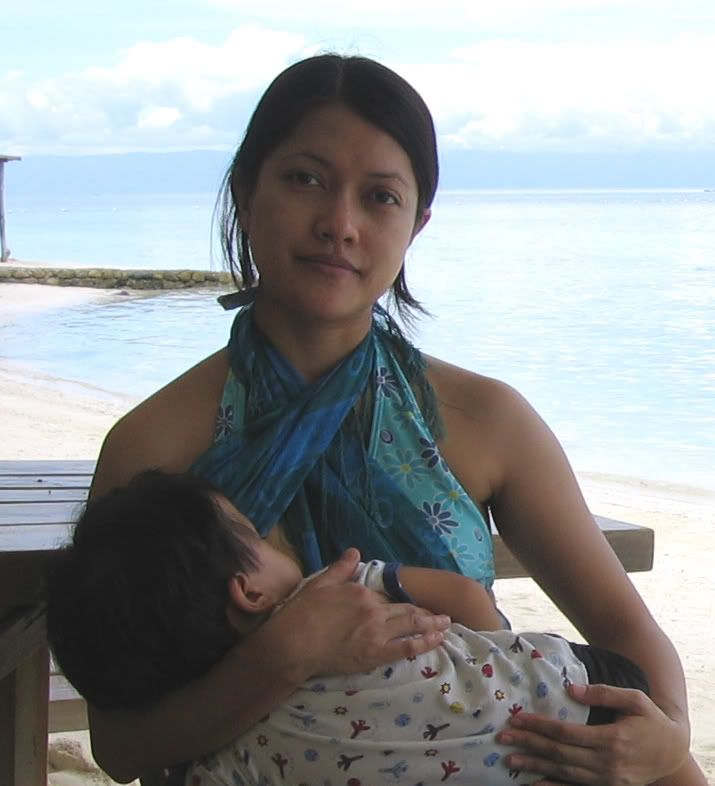
Children for Breastfeeding and DSWD Launches Sabay-sabay, Sumuso sa Nanay Year 2
Children for Breastfeeding, Inc., and Department of Social Welfare andDevelopment (DSWD) in cooperation with Technical Education and SkillsDevelopment Authority (TESDA) and TESDA Women's Center invite you to the official launching of Sabay-sabay, Sumuso sa Nanay Year 2. With the theme: Uso ang Magpasuso! (Abreast with the Times), this year's event will create the first Guinness World Record on Simultaneous Breastfeeding in Multiple Sites.
The launch will be held on April 11, 2007, Wednesday, 11:00 a.m. at the Tandang Sora Hall, TESDA Women's Center. DSWD Secretary Dr. Esperanza I. Cabral, TESDA Director General Secretary Augusto "Boboy" Syjuco, Dr. Elvira L. Henares-Esguerra, Director, Children for Breastfeeding and TESDA Women's Center Executive Director Cecile B.Gutierrez will sign a Memorandum of Agreement to stage the event.
Conceptualized and organized by Nurturers of the Earth, the affair and the simultaneous breastfeeding will feature mothers and their children who will join the national prayer of thanksgiving for motherhood and breastfeedingon May 2, 10:00 a.m. in more than 40,000 daycare centers nationwide.
World Health Organization (WHO) and UNICEF recommend that infants should be exclusively breastfed for the first six months of life to achieve optimal growth, development and health and should receive nutritionally adequate and safe complementary foods using indigenous foods while breastfeeding should continue for up to two years or beyond.
Listen to how mothers who are committed to follow this recommendation share their stories:
- Dr. Belen Dofitas, a dermatologist, traveled to London as a Cochrane research scholar and returned to breastfeeding her four-year old son after three months of absence. She and her son will be in Banaue, Ifugao on May 2w here she will serve in a medical mission.
- Mary Jane Guinto delivered her third child and was advised by her doctors not to breastfeed to stop the enlargement of a brain tumor. She underwent natural healing, delivered her baby safely and is now breastfeeding.
- Nuriza Bungubung, businesswoman, former Miss Maja Philippines, board memberof Children for Breastfeeding, Inc., is 6 months pregnant with her secondc hild and she is still breastfeeding her three-year-old child. This is her second time to join Sabay-sabay, Sumuso sa Nanay.
- Pamela Yap-Magallon, is an event organizer and a board member of Nurturers of the Earth, Inc. She breastfeeds her 2-year-old daughter despite her demanding schedule and breastfed her first child until 3.5 years old and gave him expressed breastmilk until he was six years old.
Last year, Children for Breastfeeding in partnership with the City of Manila broke the Guinness World Record on Simultaneous Breastfeeding in a Single Site when they gathered 3,541 mothers at San Andres Sports Complex and Civic Center in Malate, Manila. In cooperation with Nurturers of theEarth, UNICEF and the Department of Health, they broke the USA record of 1,130 mothers in Berkeley, California.
Contributed by:
Nona D. Andaya-Castillo, IBCLC
Director, Nurturers of the Earth, Inc.
0919-839-5555, 889-1105, 4444-716
thebreastfeedingclinic@yahoo.com.ph
About the photo: Over 3,000 mothers breastfed simultaeneously in Manila, setting a new Guinness Book world record. @ UNICEF/PHI/2006/Mike Alquinto




